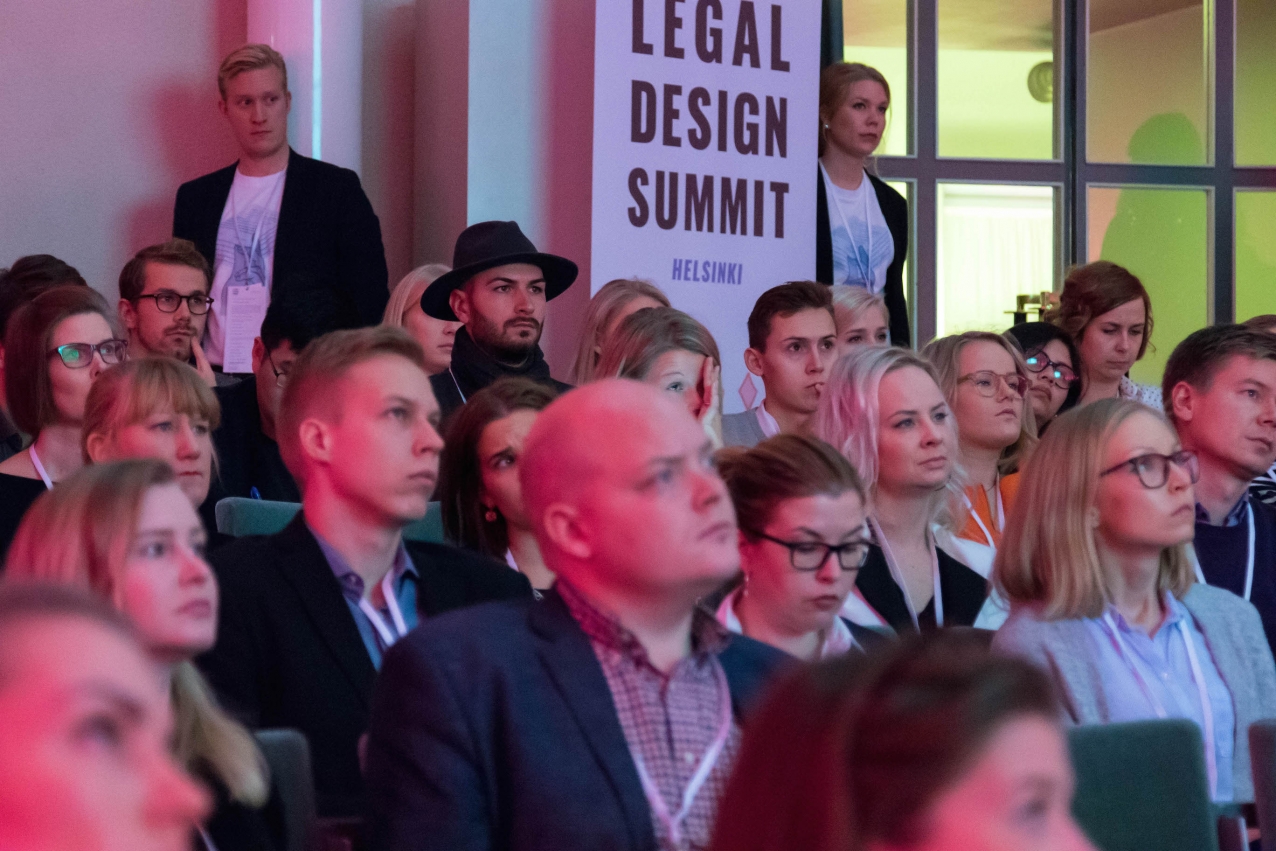Design overturns legal services

Legal design can change how services in law are provided in the future – and it affects us all.
Legal design can change how services in law are provided in the future – and it affects us all.
Among designers, law is not the considered the sexiest working field. The situation may soon change. Law offices are waking up to face legal design i.e. the importance of reformulating their services.
To designers, it comes without saying that they should think about the best possible user experience. That is not part of the legal service tradition, however. Documents are not drawn for their users but for a hypothetical, usually unlikely, legal process.
“Design thinking is completely foreign to lawyers, and I never thought about it for a second before learning about legal design,” says attorney Johanna Rantanen from Dottir Attorneys.
She realized the problem in the middle of an ordinary day at the office. She had just finished a new contract and was going through it with the client. Her client read one part of the text over and over again and finally asked if they had understood it correctly. No, not even close.
“I realized that the usability of my product was lousy. Even if a contract is technically correct, what is it good for if the client does not understand their commitment?”
This is an extensive problem.
If people read everything they sign, this would take one whole month of working hours per year. And if a professor teaching law at Harvard says not to understand the terms of their credit card, what chance does anyone else have?
“People accept terms and conditions that they have no idea about, daily. This is a social dilemma,” Rantanen points out.
Founded in January 2016, Dottir wants to renew this tradition. Its six founders agree that law can be practiced in a more relaxed manner instead of the old rigid and hierarchical way. They think that the results of lawyers’ work are similar products and tools that must be useful to other people, too.
“It would not make any sense for engineers to design products for other engineers only. It is clear that by paying attention to the design we can create more beneficial and easy-to-use products,” Rantanen explains.
Understanding this changed the way Rantanen sees her work. She started to look for information about the possibilities to apply design to legal services, and was led to Stanford.


Much more than arbitration tools
Margaret Hagan is a pioneer of the field. Working at Stanford University, Hagan is a designer and a lawyer who has studied and teached the topic more than anyone yet.
Last week Hagan travelled to Finland for the first time to attend the first Legal Design Summit in the world.
Co-organized by Dottir and service design agency Hellon, the summit brought together a bunch of professionals and students of both law and design. Speakers included Hellon’s design director Juha Kronqvist, TradeMark Now research director Anna Ronkainen and the lawyer-designer team formed by Helena Haapio and Stefania Passera, which specializes in contract design and visualization. The speakers all believe that joining the efforts of lawyers and designers may not only hugely impact the society but also create great potential on the market.
According to Hagan, the next big trend in the field will be lawyers moving to offer help where people already are. People do not want lengthy, expensive services but solutions to current problems for an affordable price.
There are many successful cases of this in the USA where Hagan lives.
For example, the Wevorce site targeted at couples who want to divorce as painlessly as possible. It is a service that offers carefully targeted legal information and help in the various phases of the divorce but lets couples make their own decisions.
Another example is a colourful NannyVan that drives around playgrounds and other places occupied by nannies to tell about their rights in the labour market. Other successful cases include comic strips made for juvenile delinquents to explain the legal process or death explained in legal terms in a relaxed party while serving wine. There was also a photo-driven application that helped cancel a parking ticket, but this service has been closed.
With contracts, visualization can help explain and index complex terms, illustrate the company values and create a positive first impression. Legal documents can be much more than arbitration tools: they can be used to communicate, create trust and clearly agree on roles.
Hagan emphasizes a change in attitude:
“We don’t always need complex design processes; it can be enough to just ask the client what they need.”